A tankless water heater, also known as an on-demand water heater, is a water heating system that provides hot water as needed. It differs from traditional tank heaters which heat and store a set amount of water in a tank.
With a tankless water heater, water is heated directly without a storage tank. Cold water travels through a pipe into the unit. When you turn on a hot water faucet, the water flows through the heater where it is warmed by a heating element or heat exchanger. This provides a constant supply of hot water on demand without having to wait for a tank to refill.
The Main Benefits of a Tankless Water Heater
Endless hot water – Tankless heaters provide hot water continuously as long as it’s needed. You’ll never run out of hot water halfway through a shower again.
Space saving – Because no tank is needed, tankless heaters are much smaller and mount on a wall. This frees up floor space.
Energy efficiency – Tankless heaters only heat water as needed instead of maintaining a whole tank of water hot 24/7. This results in major energy savings.
How Does a Tankless Water Heater Work?
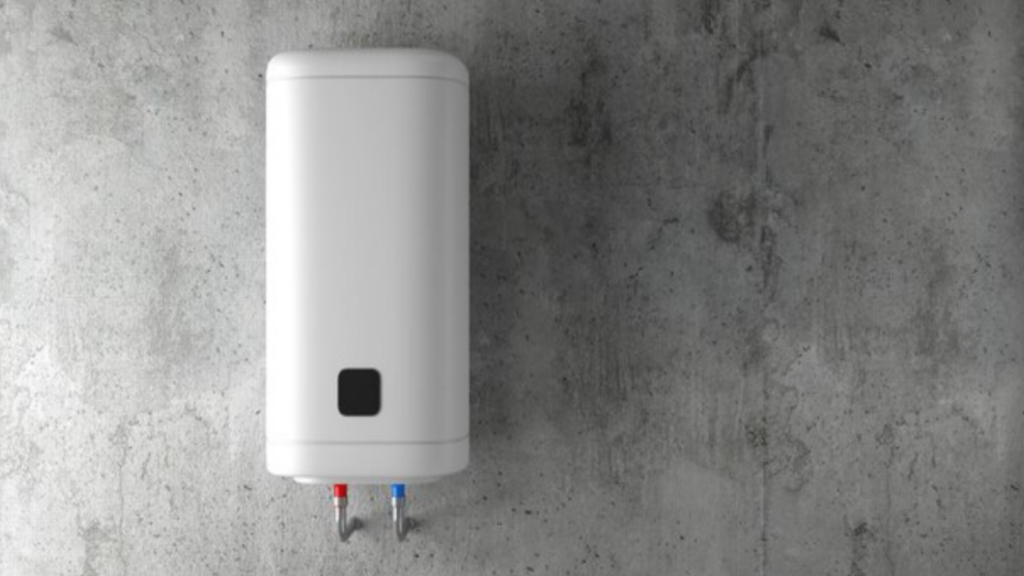
Tankless water heaters provide hot water on demand without needing a storage tank. Instead, they heat water directly as it flows through the unit. This on-demand heating is more energy-efficient than constantly heating water in a tank.
Inside the tankless unit, burners heat the water as it passes through a series of copper coils or tubes. The water doesn’t get stored first – it gets heated instantly.
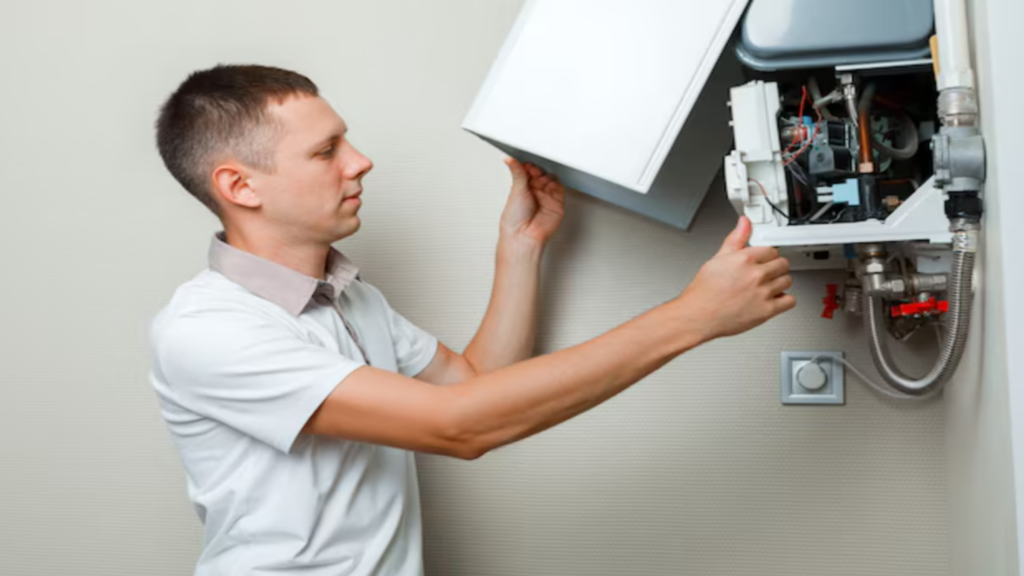
This heating process starts when you turn on a hot water tap. A flow sensor detects the water flowing and signals the gas burner or electric heating elements to turn on. The burners heat the water to the temperature set on the thermostat as it travels through the heat exchanger.
Once the tap is turned off, the flow sensor tells the unit to stop heating. This means you aren’t wasting energy and money heating water when you don’t need it. The tankless design only heats water as needed.
Types of Tankless Water Heaters
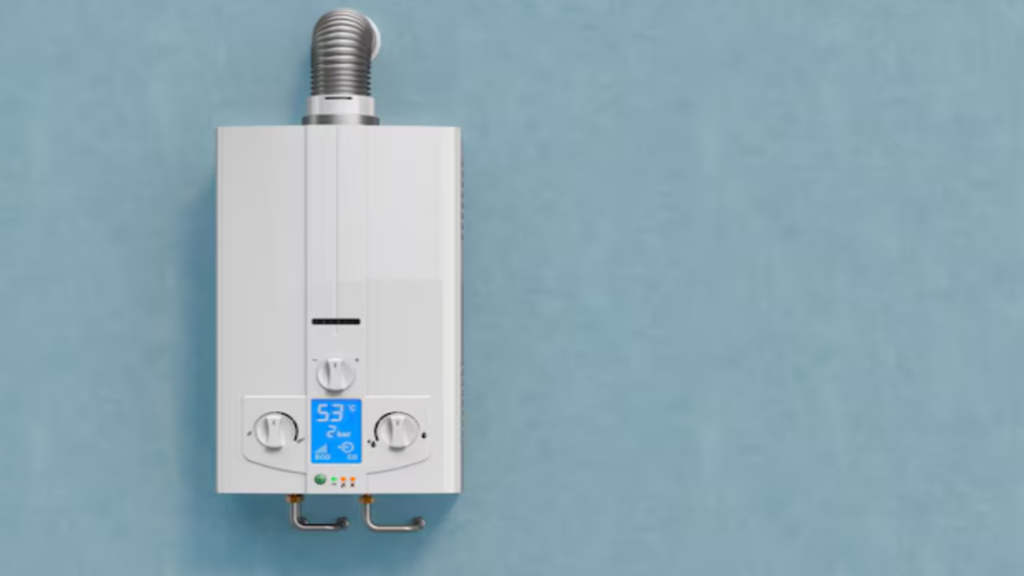
There are a few main types of tankless water heaters to consider:
Electric vs. Gas
Electric tankless water heaters – These use electricity to heat the water. They often have a higher flow rate than gas models, but electricity tends to be more expensive per BTU than gas. Electric tankless heaters work well for point-of-use applications.
Gas tankless water heaters – These use natural gas or propane to heat the water. They provide very high flow rates for whole home use and have lower operating costs than electric. However, gas lines must be installed, and venting is required.
Whole House vs. Point-of-Use
Whole house tankless water heaters – These large units are designed to supply hot water for an entire household. They have high maximum flow rates of 7-10+ gallons per minute. Whole house tankless heaters require large gas lines or heavy electrical service.
Point-of-use tankless water heaters – These smaller units are designed for single applications like a bathroom sink or shower. They have lower max flow rates of 2-4 gallons per minute. Point-of-use heaters are good options for remote bathrooms or where gas lines aren’t available.
Popular Tankless Water Heater Brands
Some top brands of tankless water heaters include:
- Rheem
- Navien
- Noritz
When choosing a model, look for the appropriate power source, flow rate, and Energy Star certification.
Tankless Water Heater Pros

Tankless water heaters, also known as demand-type or instantaneous water heaters, have many advantages over conventional storage tank water heaters. Here are some of the key pros of tankless water heaters:
Unlimited Hot Water
Tankless water heaters heat water directly without the use of a storage tank. They don’t run out of hot water. As long as you have sufficient water flow rate and gas/electricity supply, you’ll get a continuous supply of hot water. This makes them ideal for homes with high hot water usage.
Energy and Cost Savings
Because tankless heaters only heat water as needed, they use less energy than conventional tank heaters which need to constantly heat water in a tank. This results in lower electricity or gas bills. Tankless heaters save up to 34% in energy costs compared to tank heaters.
Compact Size
Tankless water heaters are much smaller than tank models. Their space-saving compact design allows flexible installation indoor or outdoor. Tankless models can be mounted on a wall taking up very little space.
Reduced Carbon Footprint
The energy efficiency of tankless water heaters means they release less greenhouse gases. If you’re looking to reduce your environmental impact, a tankless heater is a greener choice over a conventional storage tank heater.
Tankless Water Heater Cons
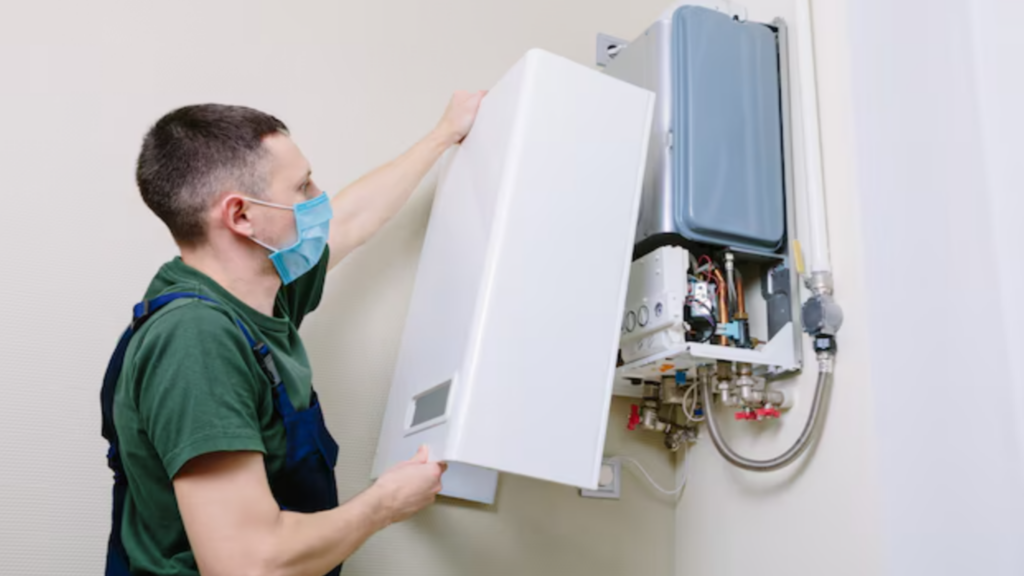
While tankless water heaters have some advantages, they also have some drawbacks to consider:
Upfront Costs
Tankless heaters have a higher upfront cost than traditional tank heaters. Purchasing and installing a tankless unit can cost $2,000-$4,000 on average, compared to $500-$1,500 for a tank model. This is because tankless heaters are more complex and require specialty parts.
Need for Larger Gas Line
Most tankless heaters run on natural gas. They require more gas flow to heat water on demand. This often requires upgrading your gas line and pipe capacity, which adds $1,000 or more in costs.
Flow Rate Limitations
Tankless heaters can only heat a certain amount of water flow (measured in gallons per minute or GPM). Typical units max out at 5-6 GPM. If your home needs more hot water than that at once, the heater won’t keep up. For larger families or homes with multiple bathrooms, this could mean lukewarm showers.
Tankless Water Heater Costs

In terms of operating costs, tankless heaters are generally more energy and cost efficient than tank heaters. Because they only heat water on demand, tankless heaters do not have to maintain a full tank of hot water at all times. This allows tankless heaters to use 25-50% less energy than tank heaters. The savings on energy bills means the slightly higher installation costs are usually paid back in around 2 to 5 years through lower operating costs.
The price of tankless water heaters varies significantly based on the brand, model, and whether it is gas or electric. Prices range from around $500 for a simple gas point-of-use model to over $3000 for a whole-house electric model. Mid-range gas tankless heaters tend to cost $600 to $1500 while electric models range from $1000 to $2500. Higher end models offer features like touchscreen digital controls and Wi-Fi connectivity. When selecting a specific model, it’s important to size it appropriately for your household’s peak hot water demand.
Maintenance Tips
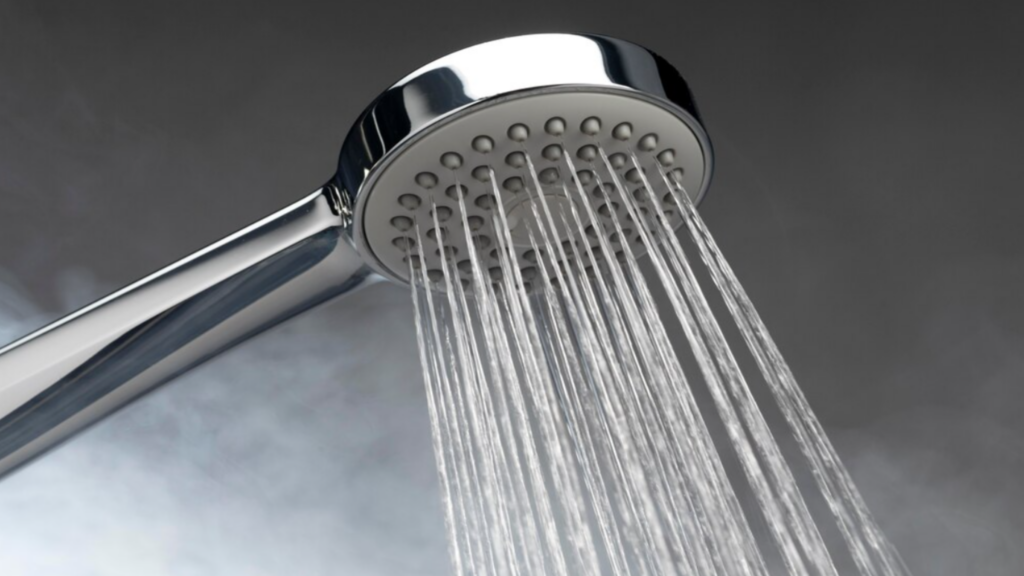
Even though tankless water heaters are very durable, you still need to perform regular maintenance to keep them running at peak efficiency. Here are some important maintenance tips:
Flush Mineral Deposits
Hard water can leave mineral deposits that build up inside the heat exchanger. It’s recommended to flush the heat exchanger annually using a descaling solution or white vinegar. This helps remove scale and sediment.
Inspect the Burner
Check the burner assembly and make sure it is clean. Remove any debris or dirt that may have accumulated. A dirty burner can reduce heating efficiency.
Clean the Filter
There is usually a filter inside the cold water inlet. This needs to be removed and cleaned a few times per year to remove trapped particles. A clean filter allows proper water flow.
Regular maintenance helps prevent problems and keeps your tankless unit working properly. Be sure to consult the manufacturer’s maintenance guide for specific recommendations. With proper care, a tankless water heater can provide decades of hot water on demand.
Frequently Asked Questions
How long do tankless water heaters last compared to tank heaters?
Tankless water heaters have a longer lifespan than tank heaters. The average tankless water heater will last 20 years or more, while the average tank water heater will last 10-15 years.
Tankless heaters last longer because they don’t store water like tank heaters do. Storing water leads to mineral buildup and corrosion inside the tank over time. Tankless heaters avoid this by only heating water on demand.
Can you add recirculation to a tankless water heater?
Yes, you can add a recirculation pump and line to a tankless water heater. This improves convenience by providing hot water more quickly when a tap is turned on.
Some tankless models have recirculation ports built-in to make adding a pump easier. A recirculation system works well with tankless heaters because it doesn’t have to reheat a full tank of water.
What is a hybrid tankless water heating system?
A hybrid system combines a small tank water heater with a tankless water heater. The tank stores a small reserve of pre-heated water while the tankless heats water on demand when the tank runs out.
Hybrid heaters provide the endless hot water of a tankless with the instant availability of a tank heater. They work well for households that use hot water inconsistently or have sudden heavy draws.
Make the Switch to a Tankless Water Heater Today!
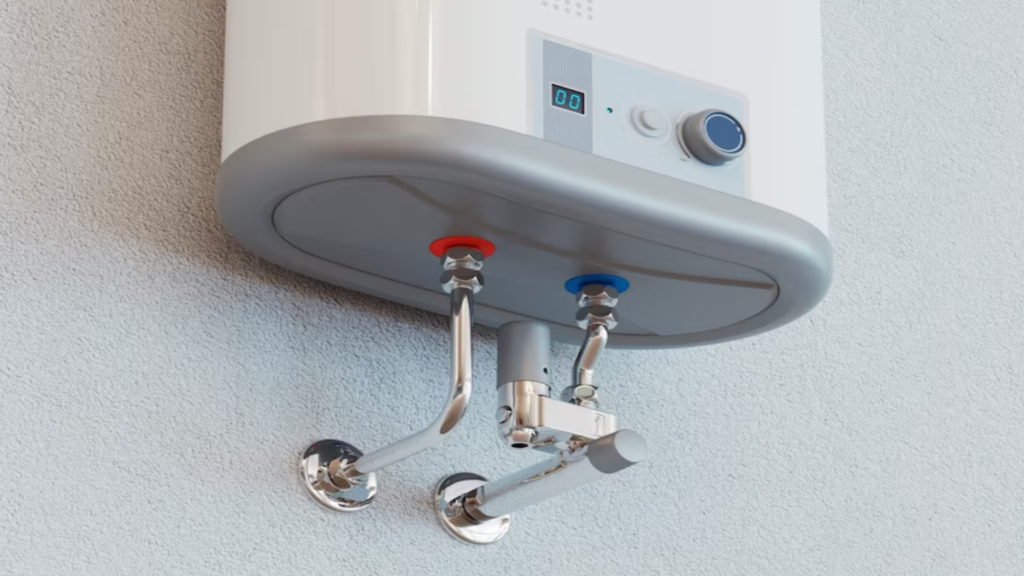
Tankless water heaters like the ones offered by Navien are very efficient and great for saving energy. A massive benefit of tankless water heaters is their small profile. Tankless water heaters take up 70% less space than tanked water heaters. A smaller water heater is particularly useful in newer homes, which try to maximize living space by having small mechanical rooms.
If you would like to learn more about how tankless water heaters can help save you money on your utility bills, contact one of our expert energy advisors and they will be more than happy to assist you.
Related Posts
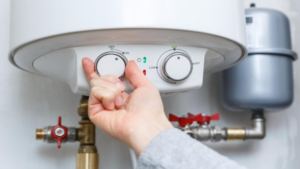
Water Heater Repair: Everything You Need to Know
Master water heater repair: fix leaks, cold water issues, rust, and noises with our DIY guide to save cash and prolong your heater’s life.
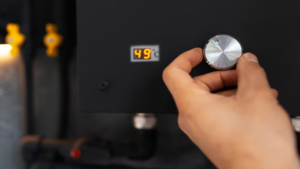
Gas Water Heater Vs. Electric Water Heater
Electric vs. gas water heater? We compare efficiency, long-term savings, and upfront costs of both so that you can make an informed decision.
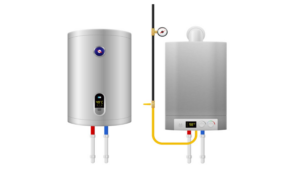
Switching to a Tankless Water Heater? Pros, Cons, Costs and More
Discover the benefits of switching to a tankless water heater to improve your home’s energy efficiency and sustainability.


No Comments